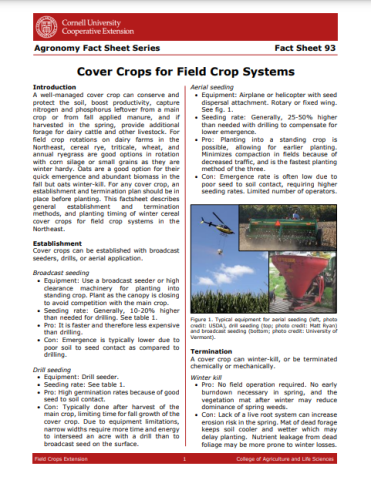For field crop rotations on dairy farms in the Northeast, cereal rye, triticale, wheat, and annual ryegrass are good options in rotation with corn silage or small grains as they are winter hardy. Oats are a good option for their quick emergence and abundant biomass in the fall but oats winter-kill. For any cover crop, an establishment and termination plan should be in place before planting. This factsheet describes general establishment and termination methods, and planting timing of winter cereal cover crops for field crop systems in the Northeast USA.
Download the factsheet below.


